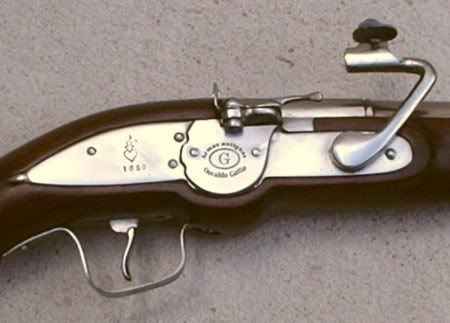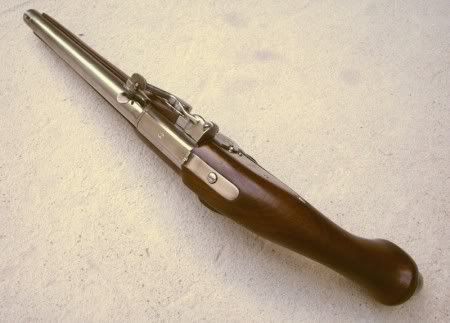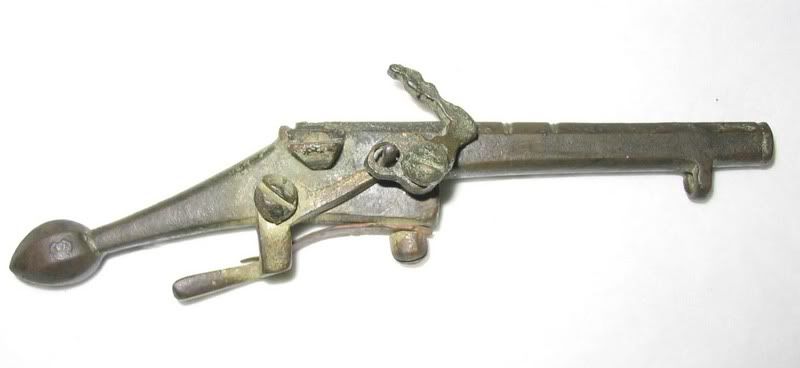No, it doesn't look like the one we were initially talking about, but it's a step in the right direction to 'prove' that they actually existed in the day. The overall length of the pistol is 4.63 in (117.7mm).
Here's the description of the pistol, as supplied by the museum's curator:
XII.11421
Toy pistol
British, early 17th century
Matchlock, made of brass with a steel spring. The stock and barrel are an integral brass casting. The butt portion terminates in an octagonal acorn shaped finial. The portion immediately forward of the lock mechanism terminates in an abrupt step beneath the barrel. On the front face of this step is a hole which served as a seating for the tip of the ramrod (now missing). The barrel is octagonal. At the breech end, a pan is cast with the barrel; beneath the muzzle, and a little to rearward of it, a projection serves as the front housing for the ramrod. The upper central flat of the barrel, and the two flanking flats, are decorated with wavy lines produced by punch marks. At approximately the mid point, these three faces are cut across with two pairs of incised lines. The mechanism is attached to the outer face of the stock where the lockplate would be on the full sized specimen. The nmechanism itself consists simply of a trigger, cranked to bring it beneath the stock, and has a forward projection with a pin projecting sidewards to link with the serpentine. The serpentine itself conforms approximately with full-size specimens except that the presence of corrosion products makes it difficult to ascertain if it would be capable of holding a match cord. At its fulcrum, a small side boss has a hole in it and into which the pin of the trigger extension engages. Both trigger and serpentine are secured to the body of the pistol by round headed screws. At the foremost end of the stock, just before its termination, a third screw secures a leaf spring, now weakened, projecting rearwards and the tip of which rests in a groove in the trigger to prevent it sliiping sideways. Pulling the trigger against the spring would cause the serpentine to partially rotate, bringing the match into the pan. The pan is vented and the barrel appears to be bored for its full length; presumably the toy would have worked.
Dimensions overall length: 4.63 in (117.7mm)








